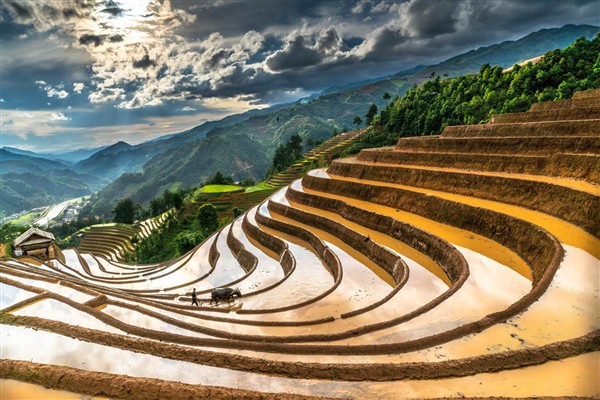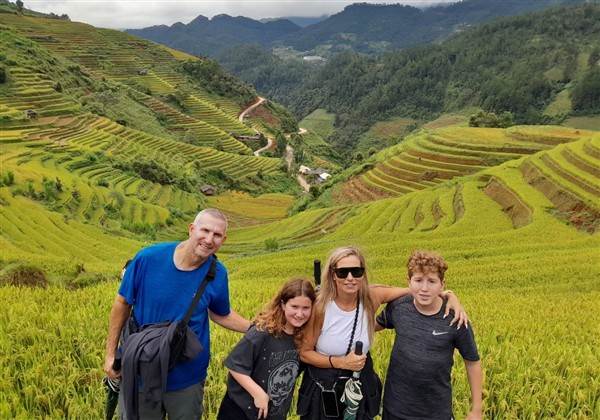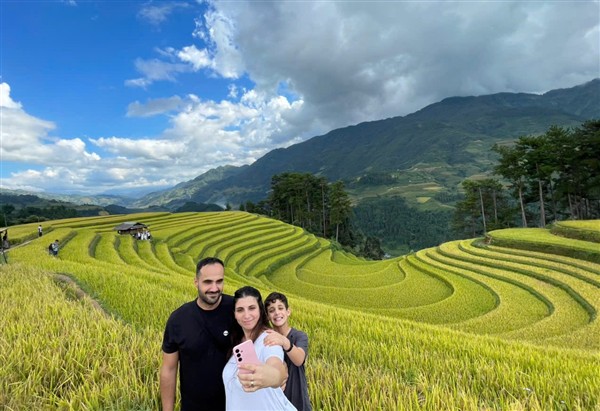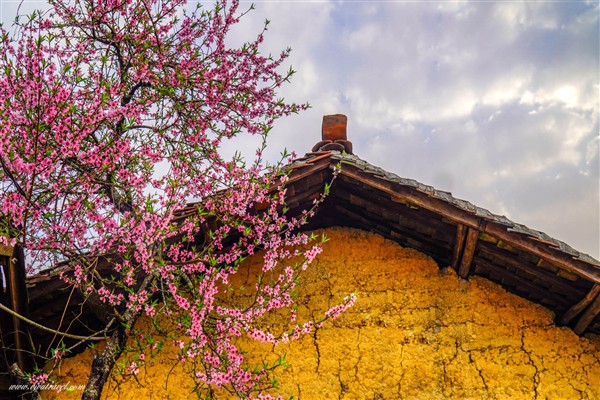What is the Best Time to Visit Northern Vietnam?

The best time to organise a Vietnam family holiday that take in the north will directly relate to the rice harvest cycle and the weather. Firstly, a trip with good weather will make the trip more comfortable, and secondly, the favourable rice harvest cycle will have an impact on the local scenery.
What time to go to North Vietnam?
The preferred time to visit northern Vietnam will ultimately come down to the reason for visiting.
A visit to the capital city Hanoi is typically acceptable at any time of the year. In the summer months the weather is mostly hot and humid, while in the winter it is mostly cool and dry.
For the travellers in search of a relaxing overnight cruise on Halong Bay, the most favourable times are likely to include March to May and September and October when the weather is bright with clear skies and warm days.
For those planning the Indochina tour that takes in parts of SE Asia, a tour that includes the north of Vietnam can be quite pleasant during October when the weather isn't too wet or too hot. Also, at this time of year, there is still an opportunity to see the rice terraces.
A wonderful time for the trekking adventure on the Vietnam holidays all inclusive is early in the year (April and May) and later in the year (October to November). A tour at either time can offer pleasant weather. Alternatively, for the travellers that wish to learn about the country's history and culture, this is also a great time to explore the local attractions on a sightseeing trip.
A trip to Sapa or a similar part of northern Vietnam during the month of June is great for those that see more of the terraces at the planting stage.
However, for those that want to see the rice terraces at their colourful best, a tour of the northern countryside that takes place during August to October is certain to appeal.
Even though the temperature will climb in the summer months, the mountainous regions in the north are still more bearable. However, in the event of heavy rainstorms, there may be weather-related issues, such as closed roads.
What are the seasons in North Vietnam?
Similar to elsewhere in Vietnam, the north has two seasons: a dry season and a wet season. Typically, the dry season will run from October to April and the rainy season lasts from May to September. However, in the north of the country with its higher elevation and mountainous terrain, the air temperature is cooler than most other parts.
The harvesting cycle in the north is mostly determined by the weather. Each year there is a single harvest. Crops are planted at the start of rainy season and left until September/October to be harvested. But, this can vary with the weather, especially if summer rains arrive early or late.
March to May
For the months of March, April and May the weather is typically warm and pleasant, although by the time May arrives the rainy season may be just arriving. During this time of year in northern Vietnam the rice terraces are prepared for the next planting cycle. Also, for travellers on the package holidays to Vietnam, this is a great time to experience the trekking adventure. However, the landscape scenery at this time won't be at its best because the latest harvest has not yet been planted.
June to September
The summer is a great time to explore the region with its landscape lush-green and colourful. The rice crops are planted once the terraces start to fill with water after the rains arrive. Typically, this can take place in June, although it will vary with the weather. For instance, if the rains arrive early, the planting may take place in May, while the later rains can lead to the planting taking place in July.
By the time July and August arrives in most years the seasonal rains will result in stunning landscape with brilliant green terraces. A visit to Sapa or a similar region in the north during the summer can be a fascinating time. It would make an amazing time to experience the Vietnam photography tour because of the vibrant colours of the scenery. However, the weather may be a little warm and uncomfortable if planning the long trekking adventure. A plus would be the fact the tourist crowds at this time of year are a lot less than seen throughout the peak season.
However, there are certain parts of northern Vietnam that can be impacted by heavy rains which can lead to damage to infrastructure and flooding. Many Vietnam tour agencies will advise against travelling to parts of the far north at this time.
Overall, this is likely to a wonderful time to fully appreciate the terraces in their prime. But, there may be a need to cancel a trekking tour at short notice or be prepared to endure plenty of rainfall.
September and November
The comfortable weather in September and October can make a great time to visit the north of Vietnam. The terraces are still colourful and golden although the summer rains may still persist into October. The process of harvesting the rice is likely to take place at this time of year.
Any trekking tour to a location like Sapa is certain to be great during these months. However, it can be a popular time which will mean there are plenty more tourist around throughout northern Vietnam.
December to March
The cool and dry winter months in the north of Vietnam can get a little chilly and may not be the best time to go on a trekking adventure. Also, the terrace fields and local landscape at this time isn't the best with most looking mostly dry and brown.





























